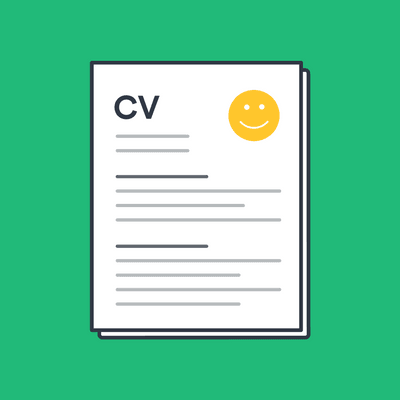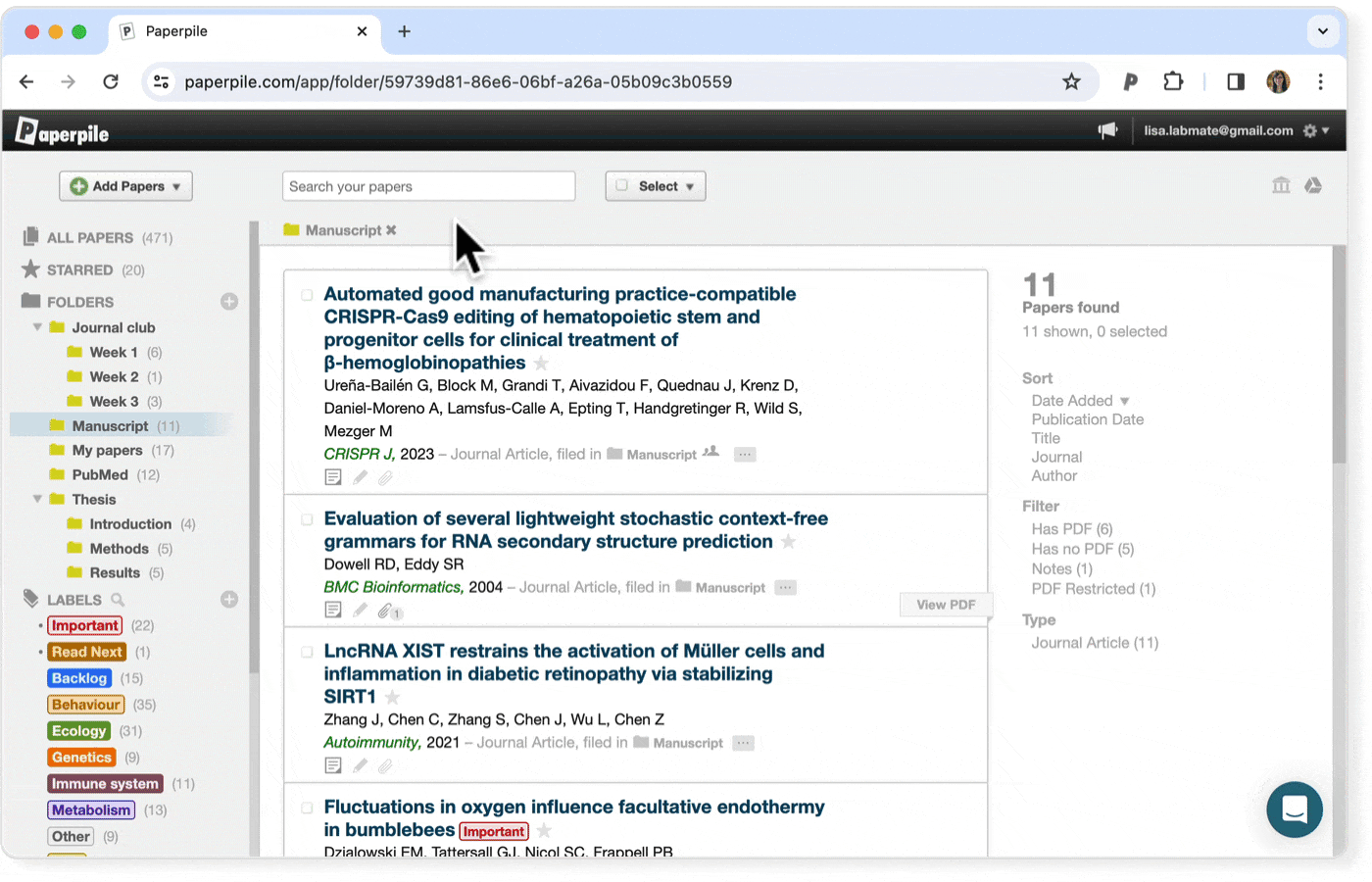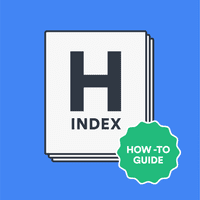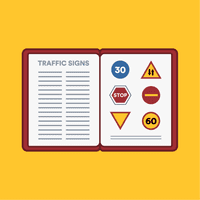How to write an Academic CV

If you want to apply for an academic position, you’ll need an academic CV. In it, you’ll provide prospective employers with comprehensive information about who you are, what you can do, and what you’ve achieved. You’ll use your academic CV to convince them that you’re the right candidate for the job.
How you write, structure, and present your skills, education, and experience in your CV is one of the critical parts of the application process. In this guide, we demystify academic CVs by presenting step-by-step instructions for how to write one that will help you reach your employment goals.
The difference between an Academic CV and a resume
Resume
Resumes are concise documents of two pages or fewer that provide a succinct overview of your qualifications, skills, and experience. Because of this, they don’t go into a lot of detail and should only highlight why you’d be a good candidate for the job you’re applying for.
Typically, when you’re applying for an industry-related position like a software developer, engineer, or accountant, you’ll use a resume to apply.
Academic CV
In contrast to a resume, an academic CV is a comprehensive document that outlines your educational background, skills, and experience.
It also outlines your:
- Research accomplishments, like publications and presentations
- Teaching experience
- Academic service
- Awards and honors
- Other academic qualifications.
In an academic CV, all this information is presented chronologically and not edited based on a specific position’s requirements as is the case with a resume. Because they provide such a comprehensive overview, they’re a lot longer than resumes and, in some cases, can consist of four, five, or even more pages.
When you’re applying for a fellowship, research, or teaching position, you’ll use an academic CV. It’s also the appropriate choice when you’re applying for a research-based position in medicine or the sciences.
What should you include in an academic CV?
- Header with contact information.
- Education.
- Experience.
- Publications.
- Presentations.
- Teaching experience.
- Academic service.
- Fellowships and grants.
- Awards and honors.
- Languages and skills.
Header
The header section of your academic CV is where you’ll introduce yourself to a prospective employer. It contains two crucial parts:
- Your contact information: full name, address, phone number, and email address.
- Your personal profile or research objective: a brief description of who you are and what your research or teaching goals are.
Education
In the education section of your academic CV, you’ll provide information about your educational background and credentials. You should list your educational credentials in reverse chronological order.
For example, you’ll start with your most recently completed degrees or the degree you’re currently working on and then list the older degrees.
For every degree, you should include:
- The date of completion of the degree. If you’re still working on the degree, provide your expected completion date.
- The name of the academic institution and the department.
- The city and state where the academic institution is located.
- The degree type and your major or field of study.
- Your minors or specializations, if applicable.
- Your thesis or dissertation title, if applicable.
- The name of the advisor of your master’s thesis or PhD dissertation, if applicable.
Experience
In your academic CV’s experience section, you’ll want to showcase the roles and expertise that make you a suitable candidate for the position you’re applying for. You’ll list your experience in reverse chronological order.
You should include the following information for every position you’ve held:
- Your title or the name of the position.
- The institution or organization’s name.
- The department, if applicable.
- The dates during which you held the position.
- A summary of your responsibilities or duties, your accomplishments in the position, and the successes you achieved, if applicable.
Publications
In the publications section of your CV, you include bibliographic references to all the work you’ve authored, as well as any works that are under review.
For every publication on your list, you need to include:
- The title of the publication.
- The title of the journal, book, or conference where it is featured, if applicable.
- The date of publication.
- The page numbers in the specific publication, if applicable.
List your publications starting with the most recent and proceeding backwards in time. Use the standard citation style of your research field to format your publication list.
Using a reference management tool like Paperpile that has all the major citation styles can help ensure your publication list is accurately formatted according to the conventions of your discipline.

Presentations
In this section, you’ll provide details about the professional presentations you’ve given, including poster presentations. As such, you’ll provide details about invited talks where you’ve been requested to present at other institutions, campus talks where you’ve presented on your institution’s campus, and conferences you’ve participated in.
For each of these presentations, provide:
- The title of your presentation.
- Author names, including yourself and all coauthors of the paper, if applicable.
- The name of the conference or event.
- The date of the event and its location.
Teaching experience
If you’ve held teaching positions, either as a full-time faculty member or as an adjunct/TA, you’ll need to include a section on teaching experience that lists:
- The institutions at which you’ve taught.
- The titles of the classes you’ve taught and explain the course content in 1-2 sentences.
- The level of the classes (undergraduate or graduate).
- The number of students per class.
This provides potential employers with a snapshot of what you’ve taught and what you’re capable of teaching. If the position you’re applying for is teaching-focused, then you should include this section above your publications and presentations.
Academic service
Your academic service activities should be included in your CV, whether you are applying for a research- or teaching-focused position. In this section of your CV, you’ll list any committees that you’ve served on and any other roles that you’ve held in which you’ve contributed to your department, institution, or field beyond your specific job requirements.
For each entry, you should list:
- The role (e.g., member, elected member, or chair for committee assignments).
- The institution or organization in which you performed the service.
- The dates of your service.
You can include 1-2 sentences explaining each service duty and activity if it helps the reader to understand the type of work performed.
Fellowships and grants
This section will include information about all the grants, fellowships, or internships you’ve received. This is important because it shows that your work has been valuable enough to attract funding from other institutions.
Here, you’ll list your grants and fellowships in reverse chronological order and include the following:
- The name of the organization.
- The name of the grant.
- The date on which you received the grant or fellowship.
Depending on your specific field and the position you’re applying for, you could also consider including the amount of funding awarded for each grant.
For instance, in the sciences, it is typical to include the amount received. It’s also common practice to include grant proposals pending (those applied for).
➡️ How to write a grant proposal. Learn more in our guide.
Awards and honors
In this section, you’ll showcase the awards and honors you’ve received related to your work. As is the case with the other sections of your academic CV, you should list these awards and honors in reverse chronological order.
When you list your awards, include:
- The name of the award.
- The year you received it.
- The name of the institution that presented you with the award or honor.
Certifications
In this section, you’ll include information about any licenses, certifications, or accreditations you’ve received. For each of these, you’ll list:
- The type of accreditation or certification.
- The institution or professional body that awarded it.
- The date on which it was awarded.
Professional memberships
In this section, you’ll list all your professional memberships and affiliations. Here, you can also list your appointment in significant positions within these associations (e.g. president, treasurer, etc.).
Languages and other skills
If you can read or write any other language and if it’s relevant to the position you’re applying for, you can include these languages in your academic CV. For every language, you should include:
- The name of the language
- The level of proficiency (beginner, intermediate, advanced)
- Type of proficiency (reading, speaking, etc.)
In addition to language skills, there might be other skills that you want to highlight to make your academic CV stand out and that are relevant to the position you’re applying for. For example, those in technical or scientific fields will typically list important hard skills like the languages they can code in, software programs, or experimental techniques.
References
In the final section of your academic CV, you include your references. Typically, three to five references will suffice unless a specific position requires that you provide more. If this is the case, you might wish to include these references in a separate addendum to your academic CV.
For each of these references, you’ll need to include:
- The reference’s full name and title.
- Their contact details including the telephone number and email address.
Keep in mind that many academic positions require recommendation letters to be uploaded to a platform like Interfolio during the application process.
Alternatively, you might be asked to input references into an online application form that will then request letters automatically via email. As a result, you don’t always need to list your references on an academic CV.
5 tips for writing an effective academic CV
1. Consider your audience
Ideally, you want the person who receives your CV to start reading and continue until the end. Ensure that your academic CV includes all of the key information about your professional life but it should not include any irrelevant details like hobbies.
You should consider the specific university, college, or department you’re applying to and their qualities and values. You should also give careful consideration to who will most likely read your CV first.
2. Focus on readability
Remember, prospective employers don’t have much time to decipher small fonts and walls of text that are challenging to read. So, you should ensure that your academic CV is easy to skim.
Some strategies here can include anything from including ample margins and whitespace to using a standard font and including bullet points to improve readability.
Ultimately, if your CV is easy to read, an employer will likely spend more time reading it.
3. Focus on structure
You should set out the information in your CV in clearly defined sections. Moreover, it’s crucial that you place the most important information at the top of your CV with other, less relevant information towards the bottom.
4. Be consistent
Be consistent with the formatting you use. For instance, if you use a specific type of heading for your CV’s sections, you should use that heading consistently throughout your CV. The same applies to your font and spacing. Ultimately, this increases the readability of your CV.
5. Edit, edit, and edit
You MUST carefully edit your CV before sending it to a prospective employer. Ensure that there are no spelling or grammatical errors, and move sections around if necessary (e.g., move teaching experience before research experience if applying for a teaching-focused position).
Many graduate programs offer CV reviews either at the department level or through the institution’s career services office. Take advantage of these programs, if applicable.
Frequently Asked Questions about academic CVs
🐶 What is an academic CV?
In an academic CV, you provide prospective employers with comprehensive information about who you are, what you can do, and what you’ve achieved as an academic or academic-in-training.
🪐 What is the difference between a resume and an academic CV?
Resumes are concise documents of two pages or fewer that provide a succinct overview of your qualifications, skills, and experience. An academic CV is a comprehensive document that outlines your educational background, research accomplishments, teaching experience, academic service, grants, and other academic qualifications.
💮 How long is an academic CV?
Since an academic CV is a very comprehensive document outlining all your qualifications in depth, it can consist of around 5-10 pages or more.
🙃 How do I write an academic CV?
To write an academic CV, consider our 5 tips:
- Consider your audience.
- Focus on readability.
- Focus on structure.
- Be consistent with the formatting you use.
- Carefully edit your CV.
📗 What skills should I put on my academic CV?
Academic CVs don’t always list skills, with the exception of language skills that pertain to your research. However, those in technical or scientific fields will likely need to list their hard skills.


